Features
Sampath Bank maintains a strong value proposition to all its stakeholders amidst ongoing economic challenges
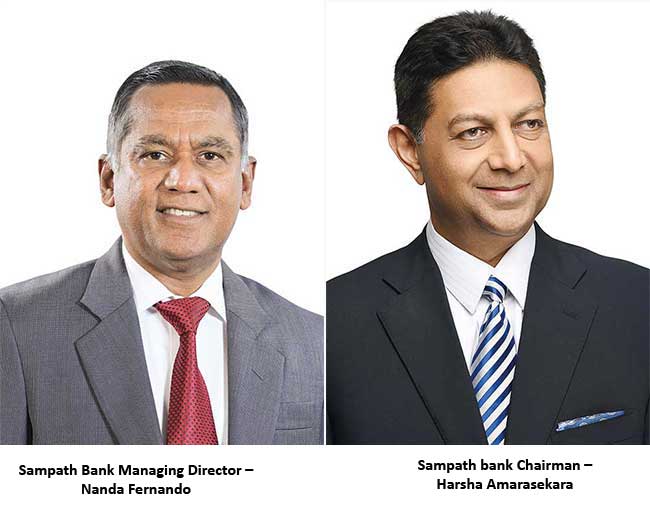
Sampath Bank continued to reinforce its commitment to all stakeholders notwithstanding the ongoing economic challenges. Stepping in to support the customers affected by the prolonged economic downturn, the Bank continued to offer tailor-made options and alternative repayment plans to help its customers sustain their businesses while staying true to its ethos of customer value creation. Similarly, the interests of another stakeholder group of the Bank, the shareholders, were kept in mind by paying the industry’s highest cash dividend of Rs 3.45 per share and a further Rs 1.15 per share in the form of scrip dividend.
The Bank also continues to honor its commitments towards the community via the “Weweta Jeewayak” tank restoration initiative as well as the Oceanic Ecosystem Restoration initiative titled “A Breath to the Ocean” which includes coral restoration, mangrove planting, and turtle conservation programs. The Bank continues to honour its commitment towards the community by focusing on environmental sustainability and towards that end completed the restoration of the Halgahawala forest reserve which it will continue to support even after the project’s conclusion.
The Bank succeeded in raising Rs 10 Bn in Tier 2 capital via a debenture issue in February 2023. Despite the depressing economic outlook in the Country, the issue was oversubscribed – a testament to the investor confidence placed in Sampath Bank and widespread acceptance of the stability and prudent governance of the Bank. The newly obtained capital will enable the Bank to rise above and prevail as one of the Country’s pre-eminent Bank.
Sampath Bank registered a profit before tax (PBT) of Rs 4.5 Bn and a profit after tax (PAT) of Rs 2.6 Bn for the three months ended 31st March 2023, indicating a decline of 30.5% and 44.3% respectively from the figures reported in 1Q 2022. This decline was mainly attributed to the exchange losses recorded during the quarter as a result of the appreciation of LKR by Rs 39 against the USD on its foreign currency reserves. All other income lines recorded performance well above the previous period.
Key highlights of financial results declared by Sampath Bank and the Group for 1Q 2023 compared to 1Q 2022:
* Strong NII buttressed by the higher AWPLR.
* 19% increase in net fee and commission income driven by trade-related operations
* As a result of the appreciation of LKR against USD by Rs 39 in 1Q 2023 vs depreciation of Rs 93.75 in 1Q 2022, the exchange income declined by Rs 10.9 Bn.
* 27% increase in impairment provision on loans and advances.
* The high inflationary conditions resulting in 22% increase in operational expenses.
* The upward revision in Income Tax rate and the introduction of SSCL resulting in higher tax expenses.
* Group’s PBT and PAT for 1Q 2023 was Rs 5 Bn and Rs 3 Bn respectively, reflecting a decline of 27% and 38% respectively.
Fund based income.
Sampath Bank reported a total interest income of Rs 50.2 Bn in 1Q 2023, up by 102% from the Rs 24.9 Bn recorded in the corresponding period of the previous year. The AWPLR moved up significantly from 9.85% at the end of the first quarter of 2022 to 21.4% at the end of the first quarter of 2023. Because of the higher interest rates that existed throughout the reporting period compared to the preceding period, the Bank was able to register a substantial increase in interest income.
Interest expenses too grew in line with the previously indicated interest rate hikes resulting in the Bank recording a total interest expense of Rs 32.1 Bn in the first quarter of 2023, an increase of 183% over the figure reported in the first quarter of 2022. As a result, net interest income increased by 34% in the first quarter of 2023.
However, the Net Interest Margin (NIM) of 5.60% reported at the end of the quarter under review showed a decline of 6 basis points from the figure reported at the end of 2022. The downward trend in AWPLR reported since the end of 2022 was the primary cause of the decline in NIM.
Non-Fund based income.
The Bank’s Net fee and commission income (NFCI) increased by 19% in the first quarter of 2023 compared to the corresponding period in the previous year. NFCI includes income from a variety of sources, including loans and advances, credit cards, trade and electronic channels. First-quarter growth was mainly attributable to the increase in fee and commission income derived from trade and remittance related activities.
Sampath Bank posted a net other operating loss of Rs 4.4 Bn in the first three months of 2023, compared to a gain of Rs 8.7 Bn reported in corresponding period of 2022, denoting a decline of 151%. This was due to the reversal of exchange gain amounting to Rs 4.5 Bn, resulting from the 10.7% appreciation of the LKR against the USD. However, the Bank recorded a net trading gain of Rs 1.7 Bn for the period under review, compared to a loss of Rs 0.4 Bn in the corresponding period of the previous financial year, mainly due to forward exchange contract revaluation gains. On this basis, the Bank’s net exchange loss from foreign exchange operations for the period under review was Rs 2.8 Bn (1Q 2022: A gain of Rs 8 Bn)
Impairment charge
The Bank recorded a total impairment charge of Rs 6.9 Bn for the first quarter of 2023, 41% less than the charge for the corresponding period in the previous year. The impairment charge for the first quarter of 2023 consisted of Rs 6.2 Bn on account of loans and advances (Q1 2022: Rs 4.9 Bn) and Rs 0.4 Bn for other financial instruments (Q1 2022: Rs 6.7 Bn). In addition, an impairment charge of Rs 0.4 Bn was recorded against commitments and contingencies (Q1 2022: Rs 0.2 Bn).
Impairment charge on loans and advances: In the first quarter of 2023, the impairment charge for loans and advances increased by 27% compared to the same period in the previous year.
Impairment on Individually Significant Loan (ISL) Customers:
During the first quarter of 2023, the Bank evaluated a substantial portion of its loans and advances under the ISL category, taking into account both their financial strength and external macroeconomic pressures. Consequently, Rs 4.6 Bn was charged as impairment provisions against ISL customers in the first three months of 2023, an increase of Rs 1.3 Bn compared to the same period in 2022.
Even though a slow recovery was witnessed in some vulnerable industries, the Bank prudently maintained the previous level of impairment provisioning against ISL customers in these industries as it did not deem that the industry risk had significantly declined.
Collective Impairment: Impairment models used in 2022 were continued in 1Q 2023 to ensure adequate buffers were in place to absorb any potential credit risk that could arise in future. This cautious strategy was in response to the uncertain economic conditions witnessed both locally and globally. The Bank continued to maintain in 2023, the allowance for overlay which it applied in 2022. The probability weightage applied to the worst-case economic scenario remained unchanged during the reporting period.
During the period under review, the Bank also proceeded to reclassify customers from Stage 1 to Stage 2 considering their potential credit risk. Meanwhile customers operating in Risk Elevated Industries were also reclassified under Stage 2, with additional provisions recognized against them.
Impairment charge on other financial instruments:
The impairment charge on other financial instruments amounted to Rs 0.4 Bn for 1Q 2023, a 95% reduction compared to Rs 6.7 Bn reported in the corresponding period of the previous year. In 1Q 2022, the Bank recognised a substantial impairment charge against FCY denominated government securities in response to the downgrade of Sri Lanka’s sovereign rating in April 2022 and the announcement by the Government of Sri Lanka (GoSL) on the restructuring of the country’s external debt through an IMF-supported economic adjustment program. No such provisioning was deemed necessary in 1Q 2023 as substantial provisioning had already been recognized against the said instruments as at 31st December 2022.
Operating Expenses.
Operating expenses in 1Q 2023 showed a 22% increase in comparison to the first quarter of 2022. The 41% increase in other expenses could be attributed to the prevailing inflationary conditions and other factors such as LKR depreciation, increased taxes and import restriction. Personnel costs too grew by 7.4% in 2023 mainly owing to annual salary increases.
Tax Expenses
Total effective tax rate of the Bank increased to 57% in 1Q 2023 from 42% reported in 1Q 2022, owing to the combined effect of the newly introduced Social Security Contribution Levy (SSCL) and the increase in income tax rate.
Key Ratios
The Return on Average Shareholders’ Equity (after tax) decreased to 8.37% as at 31st March 2023 from 10.95% reported at the end of the year 2022. Return on Average Assets (before tax) stood at 1.38% as at 31st March 2023 as against the 1.16% reported as at 31st December 2022.
Capital Ratios
The Bank’s latest capital adequacy ratios improved further in 1Q 2023 from the figures reported in the previous quarter in addition to their being well above the regulatory minimum requirements. As at 31st March 2023, Sampath Bank’s CET 1, Tier 1 and total capital ratios were at 12.51%, 12.51% and 16.12% compared to 11.92%, 11.92% and 14.27% respectively at the end of 2022. These increases are attributed to two main reasons – Rs 10 Bn worth of Tier 2 capital infusion in February 2023 and decline in risk weighted assets resulting from the LKR appreciation.
Assets and Liabilities
Total assets of the Bank declined by Rs 18 Bn (by 1.4%) from Rs 1.32 Tn as at 31st December 2022 to Rs 1.31 Tn as at 31st March 2023. This decline was mainly the result of the Rupee value reduction in foreign currency denominated assets on the back of the LKR appreciation against the USD.
Similarly, the total Advances declined by Rs 22 Bn (by 2.4%) in the first three months of 2023 from Rs 920 Bn as at 31st December 2022 to Rs 898 Bn at the end of the reporting period due to the LKR appreciation against the USD.
Sampath Bank’s total deposit book declined from Rs 1.1 Tn reported at the end of 31st December 2022 to Rs 1.07 Tn at the end of 31st March 2023, a decline of Rs 32 Bn (by 2.9%). The CASA ratio at the end of 1Q 2023 was 32.8% compared to 32.7% reported at the end of 2022.
Dividend
The Shareholders of Sampath Bank at the Annual General Meeting held on 30th March 2023 approved the final Cash Dividend of Rs 3.45 per share and Scrip Dividend of Rs 1.15 per share for the financial year 2022. In its 1Q 2023 Financial Statements, the Bank made a provision of Rs 5.3 Bn to facilitate the payment of the approved final dividend, while Rs 1.1 Bn was capitalized for the purpose of creating shares under scrip dividend. The Bank paid the dividend in April 2023.
Features
US foreign policy-making enters critical phase as fascist threat heightens globally
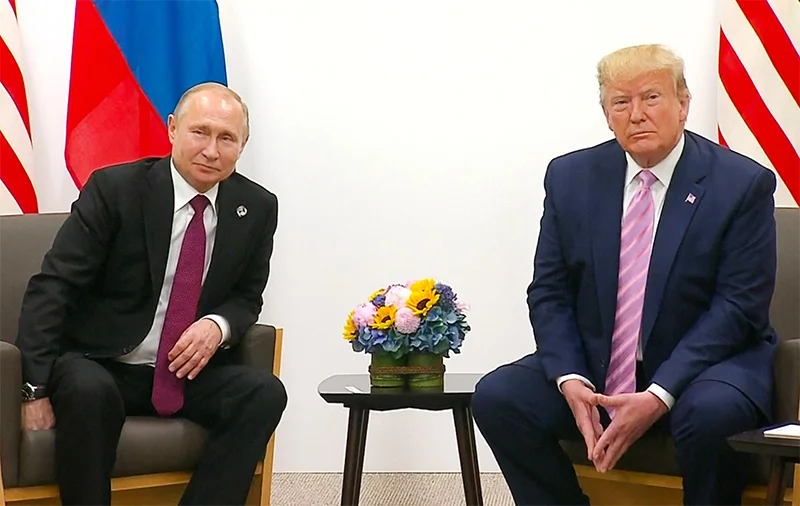
 It could be quite premature to claim that the US has closed ranks completely with the world’s foremost fascist states: Russia, China and North Korea. But there is no denying that the US is breaking with tradition and perceiving commonality of policy orientation with the mentioned authoritarian states of the East rather than with Europe and its major democracies at present.
It could be quite premature to claim that the US has closed ranks completely with the world’s foremost fascist states: Russia, China and North Korea. But there is no denying that the US is breaking with tradition and perceiving commonality of policy orientation with the mentioned authoritarian states of the East rather than with Europe and its major democracies at present.
Increasingly, it is seemingly becoming evident that the common characterization of the US as the ‘world’s mightiest democracy’, could be a gross misnomer. Moreover, the simple fact that the US is refraining from naming Russia as the aggressor in the Russia-Ukraine conflict and its refusal to perceive Ukraine’s sovereignty as having been violated by Russia, proves that US foreign policy is undergoing a substantive overhaul, as it were. In fact, one could not be faulted, given this backdrop, for seeing the US under President Donald Trump as compromising its democratic credentials very substantially.
Yet, it could be far too early to state that in the traditional East-West polarity in world politics, that the US is now squarely and conclusively with the Eastern camp that comprises in the main, China and Russia. At present, the US is adopting an arguably more nuanced approach to foreign policy formulation and the most recent UN Security Council resolution on Ukraine bears this out to a degree. For instance, the UN resolution in question reportedly ‘calls for a rapid end to the war without naming Russia as the aggressor.’
That is, the onus is being placed on only Ukraine to facilitate an end to the war, whereas Russia too has an obligation to do likewise. But it is plain that the US is reflecting an eagerness in such pronouncements to see an end to the Ukraine conflict. It is clearly not for a prolongation of the wasting war. It could be argued that a negotiated settlement is being given a try, despite current international polarizations.
However, the US could act constructively in the crisis by urging Russia as well to ensure an end to the conflict, now that there is some seemingly friendly rapport between Trump and Putin.
However, more fundamentally, if the US does not see Ukraine’s sovereignty as having been violated by Russia as a result of the latter’s invasion, we are having a situation wherein the fundamental tenets of International Law are going unrecognized by the US. That is, international disorder and lawlessness are being winked at by the US.
It follows that, right now, the US is in cahoots with those powers that are acting autocratically and arbitrarily in international politics rather than with the most democratically vibrant states of the West, although a facile lumping together of the US, Russia and China, is yet not possible.
It is primarily up to the US voting public to take clear cognizance of these developments, draw the necessary inferences and to act on them. Right now, nothing substantive could be done by the US voter to put things right, so to speak, since mid-term US elections are due only next year. But there is ample time for the voting public to put the correct perspective on these fast-breaking developments, internationally and domestically, and to put their vote to good use in upcoming polls and such like democratic exercises. They would be acting in the interest of democracy worldwide by doing so.
More specifically it is up to Donald Trump’s Republican voter base to see the damage that is being done by the present administration to the US’ standing as the ‘world’s mightiest democracy’. They need to bring pressure on Trump and his ‘inner cabinet’ to change course and restore the reputation of their country as the foremost democracy. In the absence of such action it is the US citizenry that would face the consequences of Trump’s policy indiscretions.
Meanwhile, the political Opposition in the US too needs to get its act together, so to speak, and pressure the Trump administration into doing what is needed to get the US back to the relevant policy track. Needless to say, the Democratic Party would need to lead from the front in these efforts.
While, in the foreign policy field the US under President Trump could be said to be acting with a degree of ambivalence and ambiguity currently, in the area of domestic policy it is making it all to plain that it intends to traverse a fascistic course. As has been proved over the past two months, white supremacy is being made the cardinal principle of domestic governance.
Trump has made it clear, for example, that his administration would be close to ethnic chauvinists, such as the controversial Ku Klux Klan, and religious extremists. By unceremoniously rolling back the ‘diversity programs’ that have hitherto helped define the political culture of the US, the Trump administration is making no bones of the fact that ethnic reconciliation would not be among the government’s priorities. The steady undermining of USAID and its main programs worldwide is sufficient proof of this. Thus the basis has been adequately established for the flourishing of fascism and authoritarianism.
Yet, the US currently reflects a complex awareness of foreign policy questions despite having the international community wondering whether it is sealing a permanent alliance with the main powers of the East. For instance, President Trump is currently in conversation on matters in the external relations sphere that are proving vital with the West’s principal leaders. For example, he has spoken to President Emmanuel Macron of France and is due to meet Prime Minister Keir Starmer of the UK.
Obviously, the US is aware that it cannot ‘go it alone’ in resolving currently outstanding issues in external relations, such as the Ukraine question. There is a clear recognition that the latter and many more issues require a collaborative approach.
Besides, the Trump administration realizes that it cannot pose as a ‘first among equals’, given the complexities at ground level. It sees that given the collective strength of the rest of the West that a joint approach to problem solving cannot be avoided. This is particularly so in the case of Ukraine.
The most major powers of the West are no ‘pushovers’ and Germany, under a possibly Christian Democratic Union-led alliance in the future, has indicated as much. It has already implied that it would not be playing second fiddle to the US. Accordingly, the US is likely to steer clear of simplistic thinking in the formulation of foreign policy, going forward.
Features
Clean Sri Lanka – hiccups and remedies
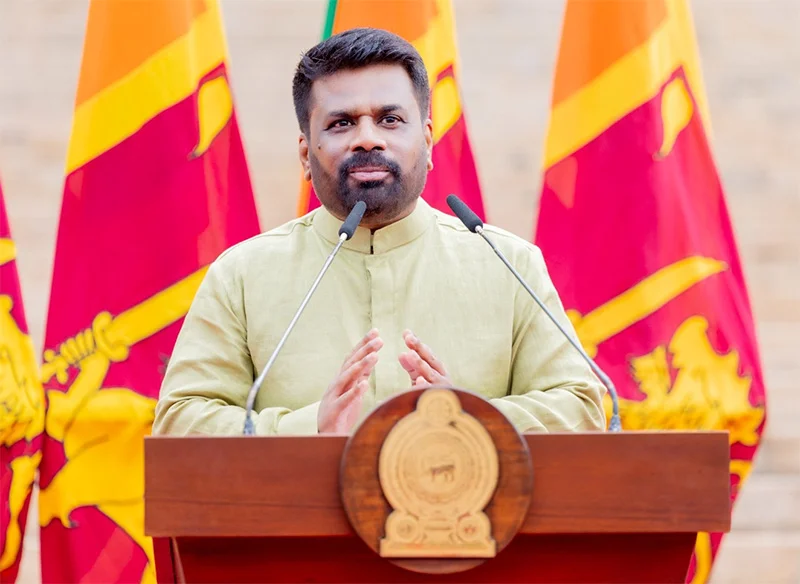
by Upali Gamakumara,
Upali.gamakumara@gmail.com
The Clean Sri Lanka (CSL) is a project for the true renaissance the NPP government launched, the success of which would gain world recognition. It is about more than just cleaning up places. Its broader objectives are to make places attractive and happy for people who visit or use services in the country, focusing more on the services in public institutions and organisations like the SLTB. Unfortunately, these broader objectives are not apparent in its theme, “Clean Sri Lanka,” and therefore there is a misconception that keeping the environment clean is the main focus.
People who realise the said broader objectives are excited about a cleaner Sri Lanka, hoping the President and the government will tackle this, the way they are planning to solve other big problems like the economy and poverty. However, they do not see themselves as part of the solution.
From the management perspective, the CSL has a strategic plan that is not declared in that manner. When looking at the government policies, one can perceive its presence, the vision being “A Prosperous Nation and a Beautiful Life,” the mission “Clean Sri Lanka” and the broader objectives “a disciplined society, effective services, and a cleaner environment.” If the government published these as the strategy, there would have been a better understanding.
Retaining the spirit and expectations and continuing the ‘Clean Sri Lanka’ project is equally important as much as understanding its deep idea. For this, it needs to motivate people, which differs from those motivators that people push to achieve selfish targets. The motivation we need here is to evolve something involuntarily, known as Drivers. Drivers push for the survival of the evolution or development of any entity. We see the absence of apparent Drivers in the CSL project as a weakness that leads to sporadic hiccups and free flow.
Drivers of Evolution
Drivers vary according to the nature of envisaged evolution for progress. However, we suggest that ‘the force that pushes anything to evolve’ would fit all evolutions. Some examples are: ‘Fitting to survival’ was the driver of the evolution of life. Magnetism is a driver for the unprecedented development of physics – young Einstein was driven to enquire about the ‘attraction’ of magnets, eventually making him the greatest scientist of the 20th century.
Leadership is a Driver. It is essential but do not push an evolution continually as they are not sprung within a system involuntarily. This is one of the reasons why CSL has lost the vigour it had at its inception.
CSL is a teamwork. It needs ‘Drives’ for cohesion and to push forward continually, like the Quality Improvement Project of the National Health Service (NHS) in England. Their drivers are outlined differently keeping Aims as their top driver and saying: Aims should be specific and measurable, not merely to “improve” or “reduce,” engage stakeholders to define the aim of the improvement project and a clear aim to identify outcome measures.
So, we think that CSL needs Aims as defined by NHS, built by stakeholder participation to help refine the project for continuous evolution. This approach is similar to Deming’s Cycle for continual improvement. Further, two more important drivers are needed for the CSL project. That is Attitudinal Change and Punishment. We shall discuss these in detail under Psychoactive Environment (pSE) below.
Aside from the above, Competition is another driver in the business world. This helps achieve CSL objectives in the private sector. We can see how this Driver pushes, with the spread of the Supermarket chains, the evolution of small and medium retail shops to supermarket level, and in the private banks and hospitals, achieving broader objectives of CSL; a cleaner environment, disciplined behaviuor, efficient service, and the instillation of ethics.
The readers can now understand the importance of Drivers pushing any project.
Three Types of Entities and Their Drives
We understand, that to do the transformation that CSL expects, we need to identify or adopt the drivers separately to suit the three types of entities we have in the country.
Type I entities are the independent entities that struggle for their existence and force them to adopt drivers involuntarily. They are private sector entities, and their drivers are the commitment of leadership and competition. These drivers spring up involuntarily within the entity.
Type II are the dependent entities. To spring up drivers of these entities commitment of an appointed trustee is a must. Mostly in state-owned entities, categorized as Boards, Authorities, Cooperations, and the like. Their drivers do not spring up within or involuntarily unless the leader initiates. The Government of a country also falls into this type and the emergence of drivers depends on the leader.
Type III entities have neither independent nor dependent immediate leader or trustee. They are mostly the so-called ‘Public’ places like public-toilets, public-playgrounds, and public-beaches. No team can be formed as these places are open to any, like no-man-land. Achieving CSL objectives at these entities depends on the discipline of the public or the users.
Clean Sri Lanka suffers the absence of drivers in the second and third types of entities, as the appointed persons are not trustees but temporary custodians.
The writer proposes a remedy to the last two types of entities based on the theory of pSE explained below.
Psychoactive Environment (pSE) –
The Power of Customer Attraction
Research by the writer introduced the Psychoactive Environment (pSE) concept to explain why some businesses attract more customers than others who provide the same service. Presented at the 5th Global Conference on Business and Economics at Cambridge University in 2006, the study revealed that a “vibe” influences customer attraction. This vibe, termed pSE, depends on Three Distinct Elements, which can either attract or repel customers. A positive pSE makes a business more attractive and welcoming. This concept can help develop Drivers for Type II and III entities.
pSE is not an all-inclusive solution for CSL, but it lays the foundation for building Drivers and motivating entities to keep entrants attractive and contented.
The structure of the pSE
The three distinct Elements are the Occupants, Systems, and Environment responsible for making a pSE attractive to any entity, be it a person, institution, organization, or county. Each of these elements bears three qualities named Captivators. These captivators are, in simple terms, Intelligent, Nice, and Active in their adjective forms.
pSE theorizes that if any element fails to captivate the entrant’s mood by not being Intelligent, Nice, or Active, the pSE becomes negative, repelling the entrant (customer). Conversely, the positive pSE attracts the entrants if the elements are Intelligent, Nice, and Active.
For example, think person who comes to a Government Office for some service. He sees that the employees, service, and environment are intelligent, nice, and active, and he will be delighted and contented. He will not get frustrated or have any deterioration in national productivity.
The Significance of pSE in CSL
The Elements and the Captivators are universal for any entity. Any entity can easily find its path to Evolution or Progress determined by these elements and captivators. The intangible broader objectives can be downsised to manageable targets by pSE. Achievements of these targets make the entrants happy and enhance productivity – the expectation of Clean Sri Lanka (CSL).
From the perspective of pSE, now we can redefine the Clean Sri Lanka project thus:
To make the Elements of every entity in Sri Lanka: intelligent, Nice, and Active.
How Would the pSE be A Remedy for The Sporadic Hiccups?
We have seen two possible reasons for sporadic setbacks and the discontinuity of some projects launched by the CSL. They are:
The absence of involuntary Drivers for evolvement or progress
Poor attitudes and behaviors of people and leaders
Remedy for the Absence of Drivers
Setting up a system to measure customer or beneficiary satisfaction, and setting aims can build Drivers. The East London NHS principles help build the Aims that drive type II & II entities. The system must be designed to ensure continual improvement following the Deming Cycle. This strategy will create Drivers for Type I & II entities.
This process is too long to explain here therefore we refrain from detailing.
Attitudinal Change
The most difficult task is the attitudinal and behavioural change. Yet it cannot be postponed.
Punishment as a strategy
In developed countries, we see that people are much more disciplined than in the developing countries. We in developing countries, give credit to their superior culture, mitigating ours as rudimental. The long experience and looking at this affair from a vantage point, one will understand it is not the absolute truth. Their ruthless wars in the past, rules, and severe punishment are the reasons behind this discipline. For example, anyone who fails to wear a car seatbelt properly will be fined 400 AUD, nearly 80,000 LKR!
The lesson we can learn is, that in Sri Lanka, we need strong laws and strict punishment together with a type of strategic education as follows.
Psychological Approach as a Strategy
The psychological theory of attitude formation can be used successfully if some good programmes can be designed.
All attitude formations start with life experience. Formed wrong or negative attitudes can be reversed or instilled with correct attitudes by exposure to designed life experiences. The programmes have been developed using the concepts of Hoshin Kanri, Brainstorming, Cause-and-Effect analysis, and Teamwork, in addition to London NTS Quality Improvement strategies.
The experience and good responses we received for our pSE programs conducted at several institutions prove and have built confidence in our approach. However, it was a time, when governments or organisations did not pay much attention to cultural change as CSL expects in the country.
Therefore, we believe this is a golden opportunity to take the CSL supported by the pSE concept.
Features
Visually impaired but ready to do it their way
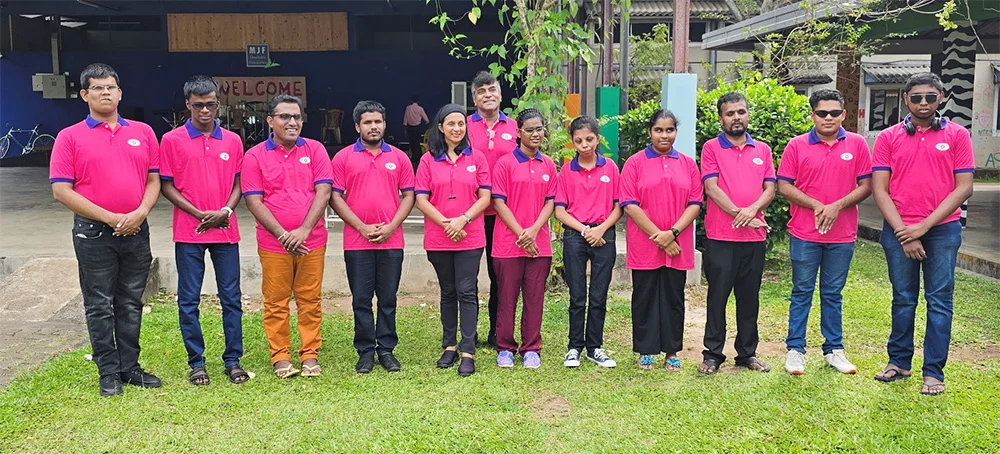
 Although they are visually impaired youngsters, under the guidance of renowned musician Melantha Perera, these talented individuals do shine bright … hence the name Bright Light.
Although they are visually impaired youngsters, under the guidance of renowned musician Melantha Perera, these talented individuals do shine bright … hence the name Bright Light.
Says Melantha: “My primary mission is to nurture their talent and ensure their sustainable growth in music, and I’m thrilled to announce that Bright Light’s first public performance is scheduled for 7th June, 2025. The venue will be the MJF Centre Auditorium in Katubadda, Moratuwa.”
Melantha went on to say that two years of teaching, online, visually impaired youngsters, from various parts of the island, wasn’t an easy ride.
There were many ups and downs but Melantha’s determination has paid off with the forming of Bright Light, and now they are gearing up to go on stage.
According to Melantha, they have come a long way in music.
“For the past few months, we have been meeting, physically, where I guide them to play as a band and now they show a very keen interest as they are getting to the depth of it. They were not exposed to English songs, but I’ve added a few English songs to widen their repertoire.
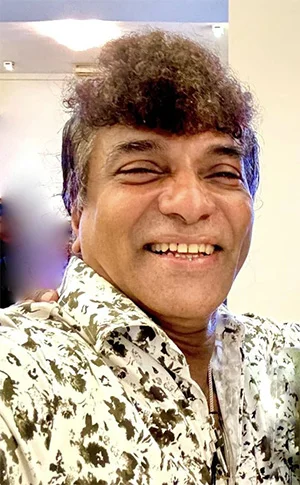
Melantha Perera: Invented a notation
system for the guitar
“On 7th June, we are opening up for the public to come and witness their talents, and I want to take this product island-wide, giving the message that we can do it, and I’m hoping to create a database so there will be a following. Initially, we would like your support by attending the show.”
Melantha says he didn’t know what he was getting into but he had confidence teaching anyone music since he has been in the scene for the past 45 years. He began teaching in 2015,
“When I opened my music school, Riversheen School of Music, the most challenging part of teaching was correcting tone deaf which is the theoretical term for those who can’t pitch a note, and also teaching students to keep timing while they sang and played.”
Melantha has even invented a notation system for the guitar which he has named ‘MelaNota’. He has received copyrights from the USA and ISO from Australia, but is yet to be recognised in Sri Lanka.
During Covid-19, Melantha showcased MelaNota online and then it was officially launched with the late Desmond De Silva playing one of his tunes, using MelaNota.
Melantha says that anyone, including the visually impaired, can play a simple melody on a guitar, within five minutes, using his notation system.
“I’ve completed the system and I’m now finalising the syllabus for the notation system.”
Melantha has written not only for the guitar, but also for drums, keyboards, and wind instruments.
For any queries, or additional information, you could contact Melantha at 071 454 4092 or via email at thebandbrightlight@gmail.com.
-

 Business3 days ago
Business3 days agoSri Lanka’s 1st Culinary Studio opened by The Hungryislander
-

 Sports4 days ago
Sports4 days agoHow Sri Lanka fumbled their Champions Trophy spot
-
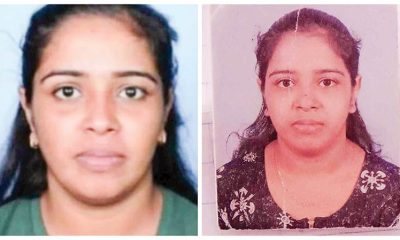
 News6 days ago
News6 days agoKiller made three overseas calls while fleeing
-
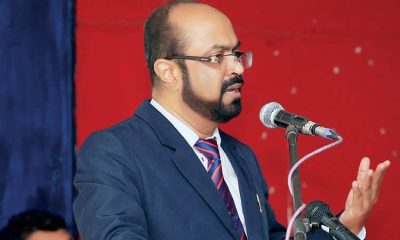
 News5 days ago
News5 days agoSC notices Power Minister and several others over FR petition alleging govt. set to incur loss exceeding Rs 3bn due to irregular tender
-
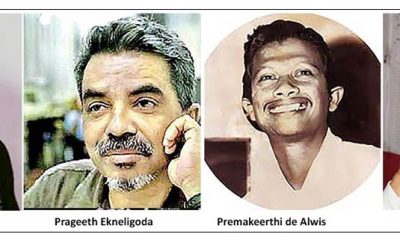
 Features4 days ago
Features4 days agoThe Murder of a Journalist
-
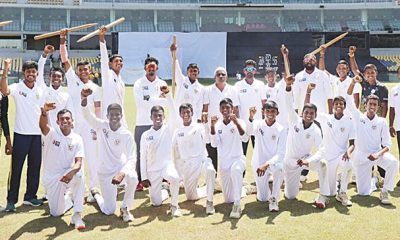
 Sports4 days ago
Sports4 days agoMahinda earn long awaited Tier ‘A’ promotion
-
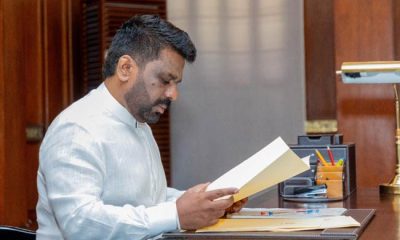
 Features4 days ago
Features4 days agoExcellent Budget by AKD, NPP Inexperience is the Government’s Enemy
-

 News5 days ago
News5 days agoMobile number portability to be introduced in June























